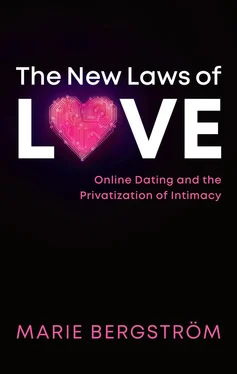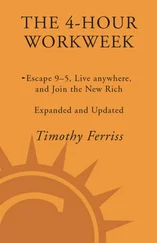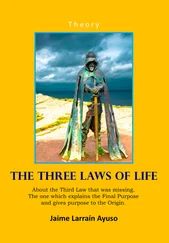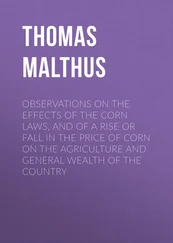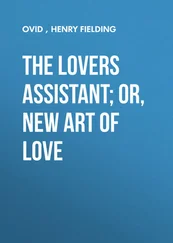The idea that social relations are breaking down under the impact of new technology is not new (Hampton and Wellman, 2018). At the very start of the century, Robert D. Putnam outlined this process in his best-selling book Bowling Alone , in which he predicted the decline of community in the United States under the influence of new media and technologies, among other factors (Putnam, 2000). Surveys, however, tend to show that exactly the opposite has occurred. A survey by the Pew Research Institute in 2011 showed that individuals who were the most connected were also the ones with the largest and most diverse networks; they had more and closer friends than individuals with less internet activity, and they declared more often to have social support. These results are consistent with those of other studies, carried out in both North America and Europe (Wang and Wellman, 2010; Mercklé, 2011). In France, for instance, social life (e.g. social visits, entertainment, and meals with friends and family) tends to have increased over time (Dumontier and Pan Ké Shon, 1999), and the most digitally connected people have been found to interact more with people in the physical world, and more often (Mercklé, 2011). These empirical observations will surely disappoint the prophets of social disintegration: social life is not in decline but is undergoing a transformation.
I believe the major change to be a privatization of social life. By this term I refer on the one hand to a shift from outdoor to indoor activities, as many practices that previously occurred in public space have migrated to the domestic sphere, and on the other hand to a tightening of social networks, which have become more centered around close intimate relationships. This means that mingling with strangers in public settings has become rarer, while domestic and private socializing has expanded. This evolution is palpable among adults, who spend less time with neighbors and more time with close kin and friends at home, for example (Wellman, 1999), but also in youth culture, where the advent of computers and digital leisure has contributed to a switch from “street culture” to a genuine “bedroom culture” (Bovill and Livingstone, 2001; Livingstone, 2002).
Online dating takes this privatization into the realms of love and sex and accentuates it. This may come as a surprise to observers, who surmise, from the large numbers of users and their public profiles, that these platforms are a new form of public space. Online dating, however, is radically different from meeting at a club, in a bar, or in any other type of public venue. First, the platforms are accessible from home, and hence they turn meeting a partner into a domestic activity. Second, far from having a public setting, interactions are strictly dyadic, being based on one-to-one conversations that cannot be seen or overheard by a third party. Third and most importantly, online dating operates a clear separation between social networks and sexual networks. Whereas previously people met partners in ordinary social settings and often through people they knew, online dating involves circumventing one’s social circles.
As Michael Rosenfeld and his colleagues have stressed, this means “disintermediating your friends” in dating (Rosenfeld et al., 2019). But the historical movement at work here is much broader. More than just circumventing family and friends, these platforms operate a sharp distinction between dating and all forms of sociability, turning the former into a specific social activity, with its own space and time. This is not a mere displacement of other meeting venues, it is a radical shift in the way we approach intimate relationships and organize social life.
This shift from public to private dating was first observed in the LGBT community. Gay and lesbian populations in the western world have seen a decline in community spaces, which earlier were important meeting venues, in favor of online encounters. In Europe the trend is particularly clear among gay men, for whom “the emergence of the internet coincides with lower attendance in spaces that combine sociability and meeting partners” (Velter, 2007, p. 82). This online migration has been harshly criticized by scholars such as Timothy James Dean, who sees it as a “troubling privatization” in which real-life face-to-face encounters have been replaced by solitary sex in front of a computer (Dean, 2009, p. 177). Others, such as Kane Race, have criticized this nostalgic viewpoint, stressing that gay hookup apps are “a significant source of pleasure, connection, eroticism and intimacy” (Race, 2015, p. 256). In any case, online dating participates in a general trend of individualization of homosexual experiences. As many scholars have pointed out, the greater acceptance of homosexuality has weakened the ties of community experience and has made some, often young lesbians and gays, distance themselves from what is sometimes called “the gay scene” (Adam, 1999; Rivière et al., 2015). Sex has become more private, as people meet more often outside collective community structures.
A similar transformation is now underway in the heterosexual population. With the expansion of online dating, the search for romantic and sexual partners is no longer within the bounds of ordinary life. The social surrounding is stripped not only of its matchmaking function but also of control over nascent relationships. This privatization of dating has two major implications: it plays a crucial, though often overlooked role in the success of online dating; and it creates an environment where external control is loosened. The present book will take a close look at these changes; in consequence it will tell a different story of how dating platforms have grown so big and what they are doing to intimacy.
Dating under the microscope
There is today an important body of scientific literature on online dating, although it seldom reaches the audience it deserves, as research is often published in academic journals that remain rather confidential. With some notable exceptions (Schmitz, 2016; Vaughan Curington et al., 2021), most books on the topic are written by journalists and essayists who draw very little on empirical observation. These books often start with an already given story: a hard-cut vision of online dating and its social impact. Although there can be references to scientific findings, and even some fieldwork, the empirical analysis is not as thorough as the theoretical framework may be. Proof is read into theory, and there is consequently very little room for contradicting facts, or even for scientific discovery and surprise. My starting point is different, as I draw on extensive empirical research. This leads me to other conclusions about the nature and novelty of online dating.
Empirical sources and methods
This book is based on research conducted between 2007 and 2020. The project started when dating websites were still a fairly new phenomenon; then it followed the emergence and diffusion of mobile apps later on. The depth of this historical layering helped me avoid overinterpretation and presentism. The empirical material comes mainly from three different sources, which articulate both a quantitative and a qualitative approach. Swedish historian Brita Planck, whose research theme is marriage in the Swedish aristocracy in the eighteenth and nineteenth centuries, gives a good illustration of the importance of such mixed methods. If she were to use only statistical data, Plancks says, she would be tempted to say that marriage is no more than a matter of money and social status, as couples were strictly matched on these criteria at the time. However, if she were to rely solely on qualitative material such as the large body of letters analyzed in her research, she would conclude that, even 200 years ago, marriage was all about love and desire. By combining both types of source, she can show that love, as a feeling, is homogamous and strongly linked to class (Planck, 2014, 2018). Studying online dating requires more than ever a dual approach of this sort, as user narratives are full of feelings of excitement, distrust, enthusiasm, frustration, and deception and convey an image of online dating that is sometimes contradicted by statistical analysis, which reveals trends that users do not see (or do not want to see). For these reasons, I attempt to use systematically both qualitative and quantitative sources.
Читать дальше
